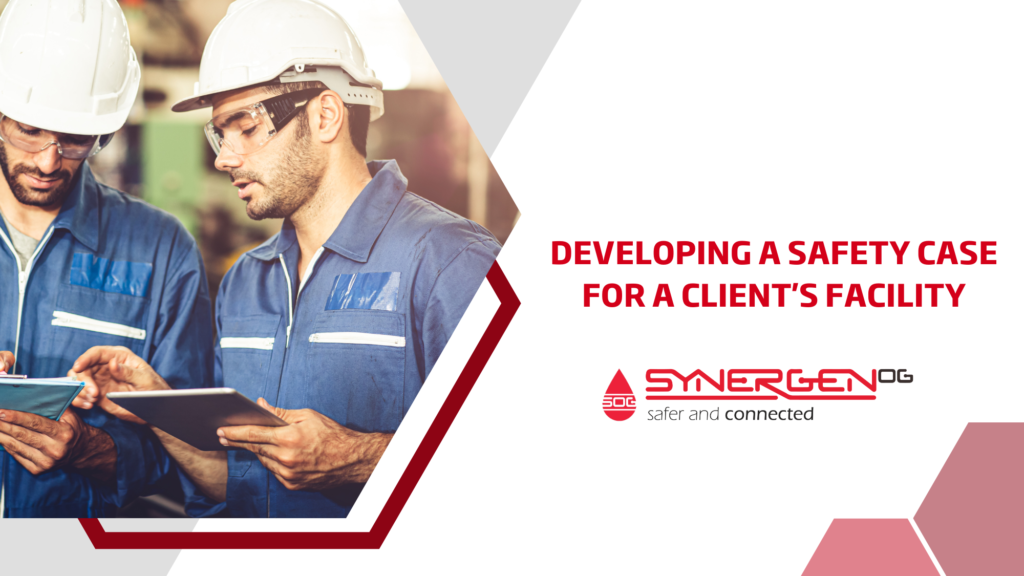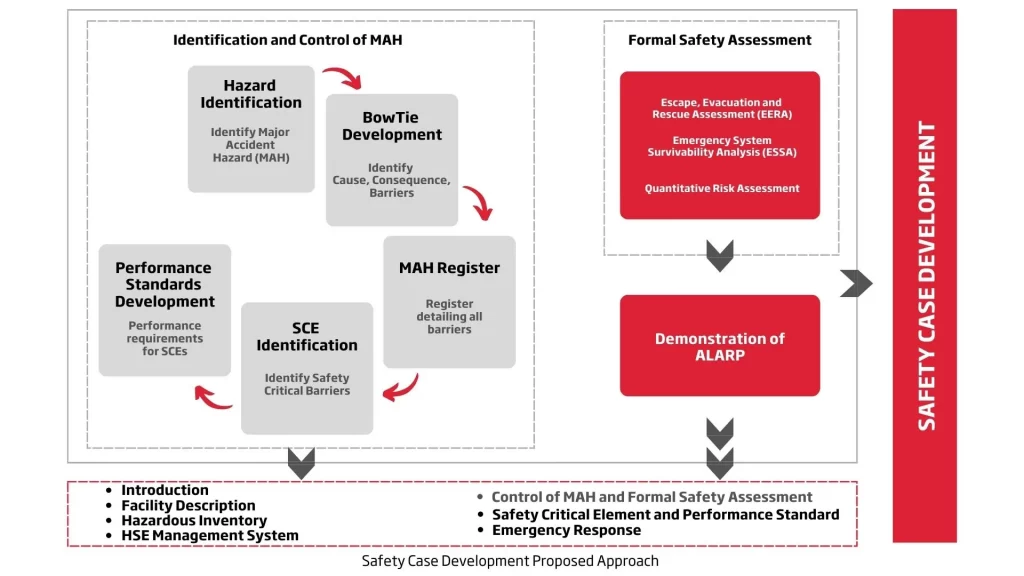
Introduction
In today’s highly regulated industries, ensuring facilities’ safety and compliance is paramount. Our client approached us with a challenging request to develop a safety case for their existing facility within a tight deadline. The document was crucial for regulatory submission and must be updated with all relevant information. The client’s facility was subject to stringent safety regulations, and any delay in submitting the safety case could have serious financial and operational consequences. Recognising the tasks’ importance and urgency, we immediately devised a strategy to meet the client’s requirements.
Objective
Our primary objective was to complete the safety case within the given timeline while ensuring all the necessary information was included and met the regulators’ requirements. This involved a thorough understanding of the regulatory framework of the client’s facility, and the specific safety concerns that must be addressed in the safety case. Additionally, we aimed to maintain open and effective communication with the client throughout the project to ensure that all parties were aligned and working towards the same goal.
Approach
To accomplish the project objectives, we developed a comprehensive plan to tackle this project, which included the following steps:

♦ Gap Analysis: We began by conducting a gap analysis of the initial Safety Case provided by the client. This involved reviewing the existing document and identifying the missing information or any discrepancies needed to be addressed to meet regulatory requirements. We also sought to understand why certain information was left out and whether it was due to a lack of data or other reasons.
♦ Data Collection: Once we had identified the gaps in the initial Safety Case, we worked closely with the client to gather the necessary data and information to fill these gaps. This involved collecting technical data, safety records, and other documentation relevant to the facility’s safety assessment. We also consulted with subject matter experts within our team and client’s organisation to ensure we comprehensively understood the facility’s safety concerns and requirements.
♦ Document Revision: With the missing information in hand, we incorporated it into the existing Safety Case document. This involved rewriting sections, updating figures and tables, and ensuring the document was organised and formatted according to regulatory guidelines. Throughout this process, we communicated closely with the client to ensure our revisions accurately reflected their facility’s safety status and addressed all relevant concerns.
Implementation
With our approach in mind, we began rearranging and writing new sections into the client’s record and sending them back for review. We worked closely with the client’s response team and incorporated their comments into the document to ensure a comprehensive safety case. This iterative process allowed us to refine the document and address any concerns or questions that arose during the review process.
To ensure that the project stayed on track and met the tight deadline, we implemented effective project management practices, including regular progress updates, milestone tracking, and resource allocation. Our team members were assigned specific tasks and responsibilities, and we held regular meetings to discuss progress, challenges, and potential solutions. This collaborative approach allowed us to maintain momentum and promptly address any issues, ensuring the project stayed on schedule.
Results
We successfully completed the safety case within the required timeframe, addressing all critical comments before submitting the document’s final version to regulators, who approved the submission. The client was pleased with the outcome, as further delays would have cost them money due to contractual obligations. Our ability to meet challenging deadlines and deliver a high-quality safety case demonstrated our commitment to client satisfaction and our expertise in managing complex projects under pressure.
Lessons Learned
The project provided valuable insights into our methodologies, project management, and areas for improvement. Some key lessons learned from this project include:
⇒ The importance of effective communication and collaboration between our team and the client’s response team, which facilitated a smooth and efficient project workflow.
⇒ The need for thorough gap analysis and data collection to ensure the safety case was comprehensive and met regulatory requirements.
⇒ The value of diligent project management practices in keeping the project on track and ensuring that all team members were aligned and working towards the same goal.
These lessons allowed us to self-reflect and identify opportunities for enhancing our processes and services in the future, ultimately improving our ability to serve our clients more effectively.
Conclusion
By closely collaborating with the client’s response team and diligently working on the safety case, we met the challenging deadline and delivered the document that met regulatory requirements. The client’s satisfaction and the lessons learned from this project have further strengthened our commitment to providing top-quality services to our clients. This experience has enhanced our capabilities in managing complex projects under tight deadlines and reinforced our reputation as a reliable partner for any facility needing safety case development and other regulatory compliance services.




